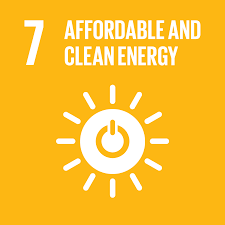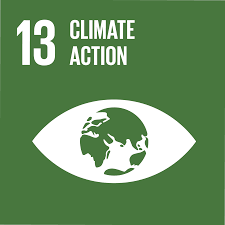Emissions Mission
- Aashika

- Aug 25, 2020
- 5 min read
Updated: Sep 1, 2020
This article is focused on the following Sustainable Development Goals:
To support our growing world, the innovative minds that live within it have created many solutions to make life easier for all of the human race. From air conditioners that bring cold air into our homes to computers that hold all the information just one search away to the machines that can fly, we all benefit from these many inventions. However, these solutions have created new problems that our world has to deal with: one of them being climate change. Climate change is impacting human lives, animal lives, and nature in many ways. It's now time for the innovative minds of our generation to solve the problem we have created.

From shifting weather patterns hindering food production to rising sea levels causing flooding, the impacts of climate change are globally unprecedented. Between the next 10 to 30 years, climate change is expected to cause approximately 250,000 deaths per year. A group of 1,300 scientists from countries all over the world have concluded that there's more than a 95 percent probability that human activities over the past 50 years have warmed our planet (“The Causes of Climate Change”). Without drastic action today, these effects will only worsen and become more challenging to solve in the future.
Though the Paris agreement, which is aimed at curbing CO2 emissions around the world, has greatly encouraged other governments around the world to reduce their carbon emissions, the global community is far off track to meet the targets set by this agreement. This means that Climate Action, SDG number 13, still needs us as the youth to take urgent action to mitigate climate change. We must be the generation and raise new generations to protect, not hurt our planet.
“We are the first generation to feel the effect of climate change and the last generation who can do something about it."
- Barack Obama, Former US President
While the #FridaysforFuture movement has been a very important part in advocating for action against climate change, there are many other ways we as the youth can use our innovative minds to take action ourselves. In hopes of reducing our carbon emissions, which is the most important long-lived "forcing" of climate change, I, as well as some members of the Citizens of the World Society, decided to take matters in our own hands and started the emissions mission project. This project would consist of two parts: conducting a power audit of our school then presenting our findings to our administration to improve the efficiency of our systems and replacing some of those systems with renewable energy sources.
A power audit analyzes the amount of electrical energy used by the devices that are measured. It can help you understand the amount of energy you use on a daily basis, conserve that energy, and also fix leaks that waste large amounts of energy. There are different types of power audits, depending on the systems you are measuring, which require different types of materials. A simple power audit is the quickest type of audit and only involves minimal steps to conduct. It involves interviews with heads of electricity in the facility being measured, a review of utility bills, and a walk-through of the facility to identify any glaring areas of energy waste or inefficiency. The audit my team and I conducted involved similar steps with the addition of calculating power usage of daily-use devices in our school such as computers, lights, and air conditioners using power labels on the items. Though the recent pandemic hindered our analysis and collection of data, our hope was to use the data we find, compare it with the utility bills of our school, and identify areas of inefficiencies. Our hope was to reduce the inefficiencies by suggesting solutions to our administration while also convincing them to replace some of the most used energy sources with renewable energy, such as solar power.
Renewable energy sources have the power to completely transform our world and greatly reduce our carbon footprint. New innovations such as solar panels, hydroelectric systems, as well as wind turbines have great potential if used on a large scale. SDG goal number 7, affordable and clean energy, hopes to increase substantially the share of renewable energy in the global energy mix by 2030. The renewable energy share of total final energy consumption increased 17.3 per cent in 2017 (“Goal 7"). However, greater change is needed. It is our responsibility to not only advocate for renewable energy but to take action to replace our own energy sources. By conducting a simple power audit, you will be able to greatly reduce the inefficiencies of the systems you use, reducing your electrical usage, translating to a reduction in your own carbon footprint. Taking this a step further and replacing your energy sources with renewable energy can not only reduce global warming but also improve public health, create jobs, and improve economies.
While we stay at home for the next few months, let's make an effort to reduce inefficiencies in our systems and conserve energy on a daily basis. Be conscious of how long you leave your air conditioners on, how long you leave your lights on, and how many plug points are left on with no output. If you are able to, consider taking a power audit of your school and even your own home and replacing the current energy sources with more renewable and energy-efficient sources. Acting now is essential for everyone and everything on this planet. We need to find the courage to see the common-sense solutions right in front of us, such as the conservation of energy and the use of renewable energy sources. Together, we can create the future we want. With the connections seen above to the UN Sustainable Development Goals 7 and 13, you can see that you too can help reach these goals by going beyond advocating and instead, taking urgent action. Remember, change starts with you.
External Resources
Click here to learn more about the pressing dangers of fossil fuels.
Clicl here to read about the benefits of conducting a power audit.
Click here to learn how you can conduct a power audit.
Works Cited
1. “Benefits of Renewable Energy Use.” Union of Concerned Scientists, www.ucsusa.org/resources/benefits-renewable-energy-use.
2. British Geological Survey 1998 - 2017 (c)NERC mailto:www-bgs@bgs.ac.uk. “What Causes the Earth's Climate to Change?” What Causes the Earth's Climate to Change? | Climate Change | Discovering Geology | British Geological Survey (BGS), www.bgs.ac.uk/discoveringGeology/climateChange/general/causes.html.
3. “The Causes of Climate Change.” NASA, NASA, 10 July 2020, climate.nasa.gov/causes/.
4. “Climate Change.” United Nations, United Nations, www.un.org/en/sections/issues-depth/climate-change/.
5. “Goal 7 | Department of Economic and Social Affairs.” United Nations, United Nations, sdgs.un.org/goals/goal7.
6. “Goal 13 | Department of Economic and Social Affairs.” United Nations, United Nations, sdgs.un.org/goals/goal13.
7. July 17, 2017 Melissa Denchak. “How You Can Stop Global Warming.” NRDC, 9 Mar. 2020, www.nrdc.org/stories/how-you-can-stop-global-warming.






Comments